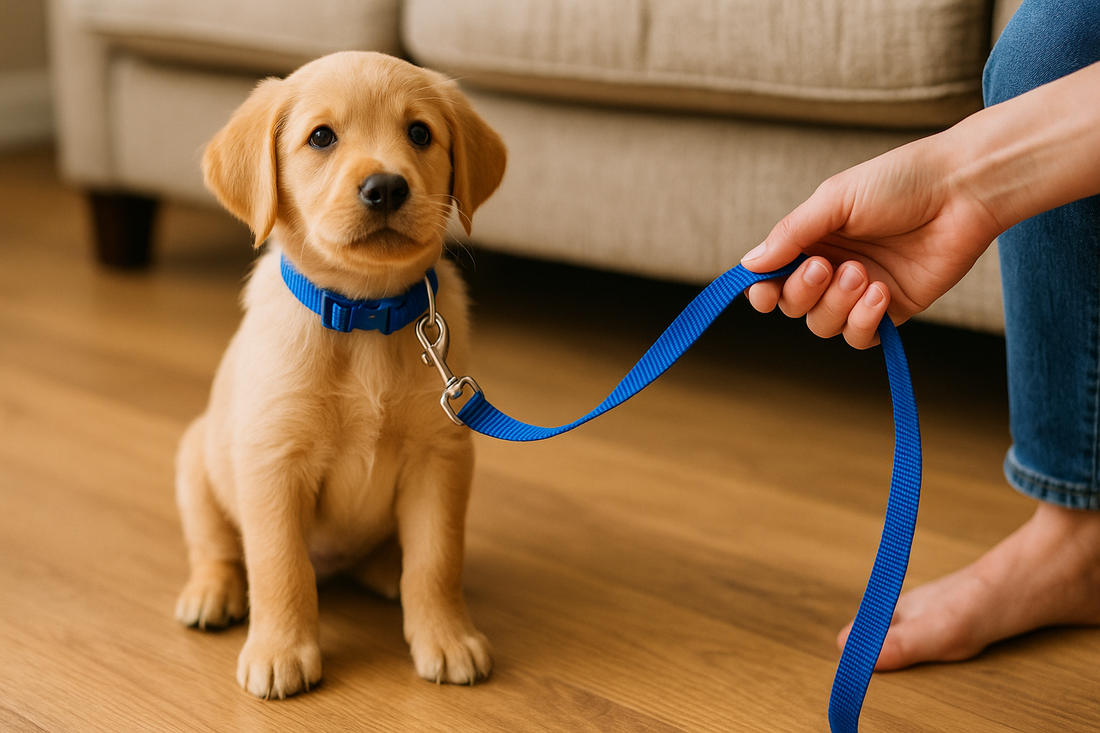
How to Introduce a Puppy to a Collar and Lead: Step-by-Step Guide
Bringing home a new puppy is exciting, but it also comes with lots of firsts for both of you. One of the most important early milestones is helping your puppy get used to wearing a collar and walking nicely on a lead. Done well, this builds the foundation for stress-free walks and ensures your puppy feels safe and confident every step of the way.
As a professional dog trainer and behaviourist, I’ve supported many new owners through this stage. The key is to move gradually, keep things positive, and remember that every puppy learns at their own pace.
Step 1: Choosing the Right Collar and Lead
-
Collar fit: A flat, lightweight collar is best for a young puppy. Make sure it’s snug but not tight. You should be able to slip two fingers comfortably between collar and neck.
-
ID tag: It’s a good habit to attach an ID tag straight away so your puppy grows used to the weight.
-
Lead choice: Start with a simple, lightweight fabric lead around 1–1.5 metres. Avoid heavy chains or retractable leads for now as they can be overwhelming for a pup.
Step 2: Introducing the Collar Indoors
For many puppies, the collar feels strange at first.
-
Let them sniff the collar before putting it on.
-
Pop it on for short periods around the house, ideally during mealtimes or play so it becomes associated with positive experiences.
-
If your puppy scratches or fusses, distract them with a toy or treat rather than taking the collar off straight away.
Gradually increase the time your puppy wears their collar until it becomes just another part of daily life.
Step 3: Getting Comfortable with the Lead
Next comes the lead, but don’t rush to the front door just yet.
-
Attach the lead indoors and let your puppy drag it around while supervised. This helps them get used to the feel without pressure.
-
Pick up the lead gently and follow your puppy around for short bursts, rewarding calm behaviour with treats or praise.
-
Keep sessions short and upbeat, just a few minutes at a time.
Step 4: Practising Indoors Before Heading Outside
Before walks, practise moving together indoors or in the garden.
-
Encourage your puppy to walk beside you using small treats as a guide.
-
Reward for any slack in the lead when it’s loose rather than tight.
-
If your puppy pulls, simply stop walking, wait a moment, and then encourage them back to your side before continuing.
These early lessons indoors make outdoor training far easier.
Step 5: The First Walks
When your puppy is comfortable with the collar and lead, you’re ready for short outdoor sessions.
-
Choose a quiet, low-distraction environment at first.
-
Keep walks short, 5 to 10 minutes is enough for young pups.
-
Focus on exploration and positive experiences rather than distance.
Remember, walking nicely on a lead is a skill learned over time. The early goal is simply to help your puppy feel safe and relaxed while exploring the world.
Troubleshooting Common Issues
-
Puppy pulls on the lead: Stop, wait, and only move forward when the lead slackens. Consistency is key.
-
Puppy refuses to move: Use gentle encouragement, treats, or a favourite toy. Avoid dragging or pulling.
-
Puppy bites the lead: Offer an alternative chew toy and reward when they redirect.
Final Thoughts
Introducing your puppy to a collar and lead is a process best done with patience, positivity, and lots of rewards. Start slow, celebrate small wins, and keep training sessions fun. With time, your puppy will learn that the collar and lead mean adventure, safety, and bonding with you, their favourite person.
